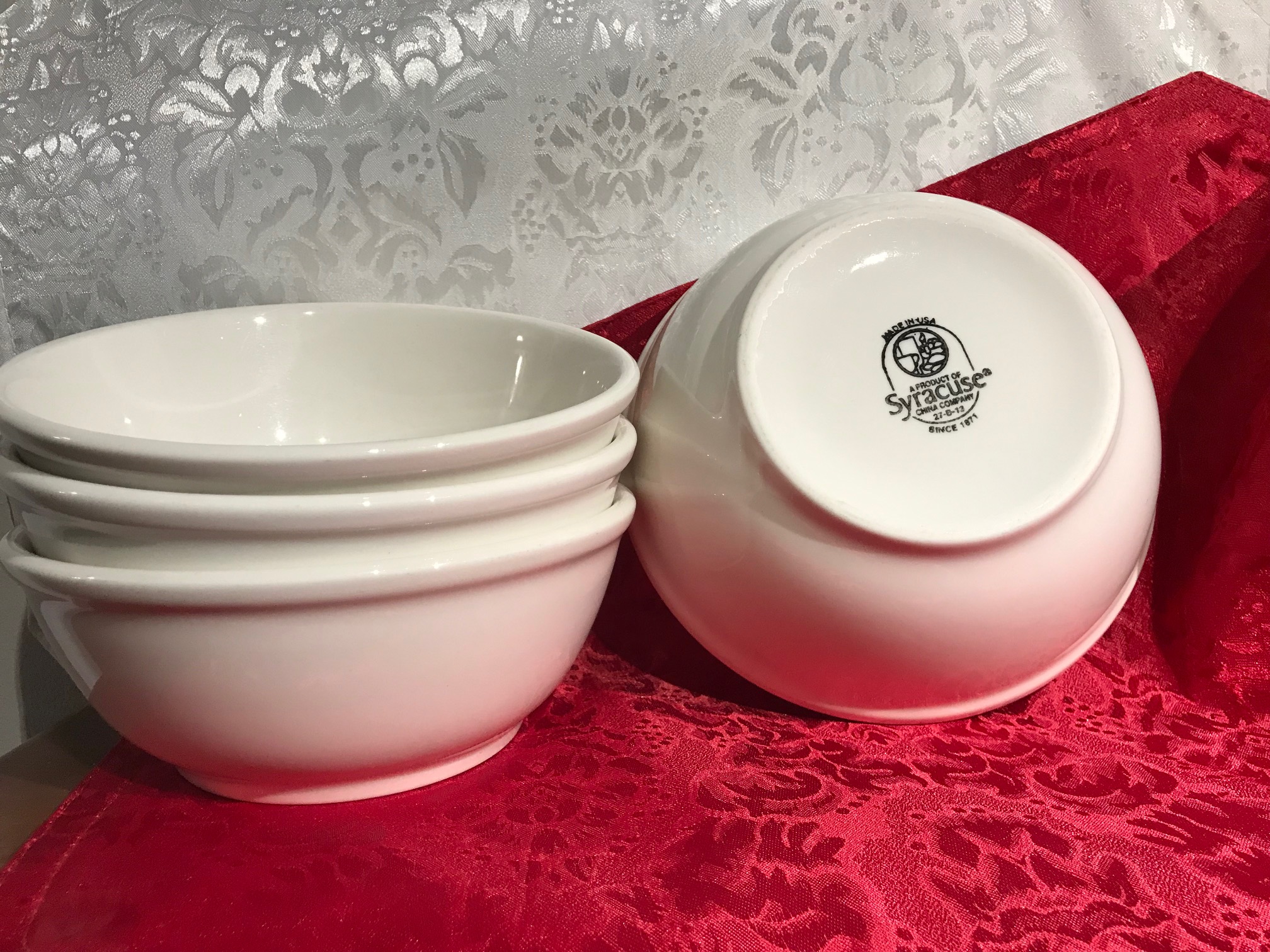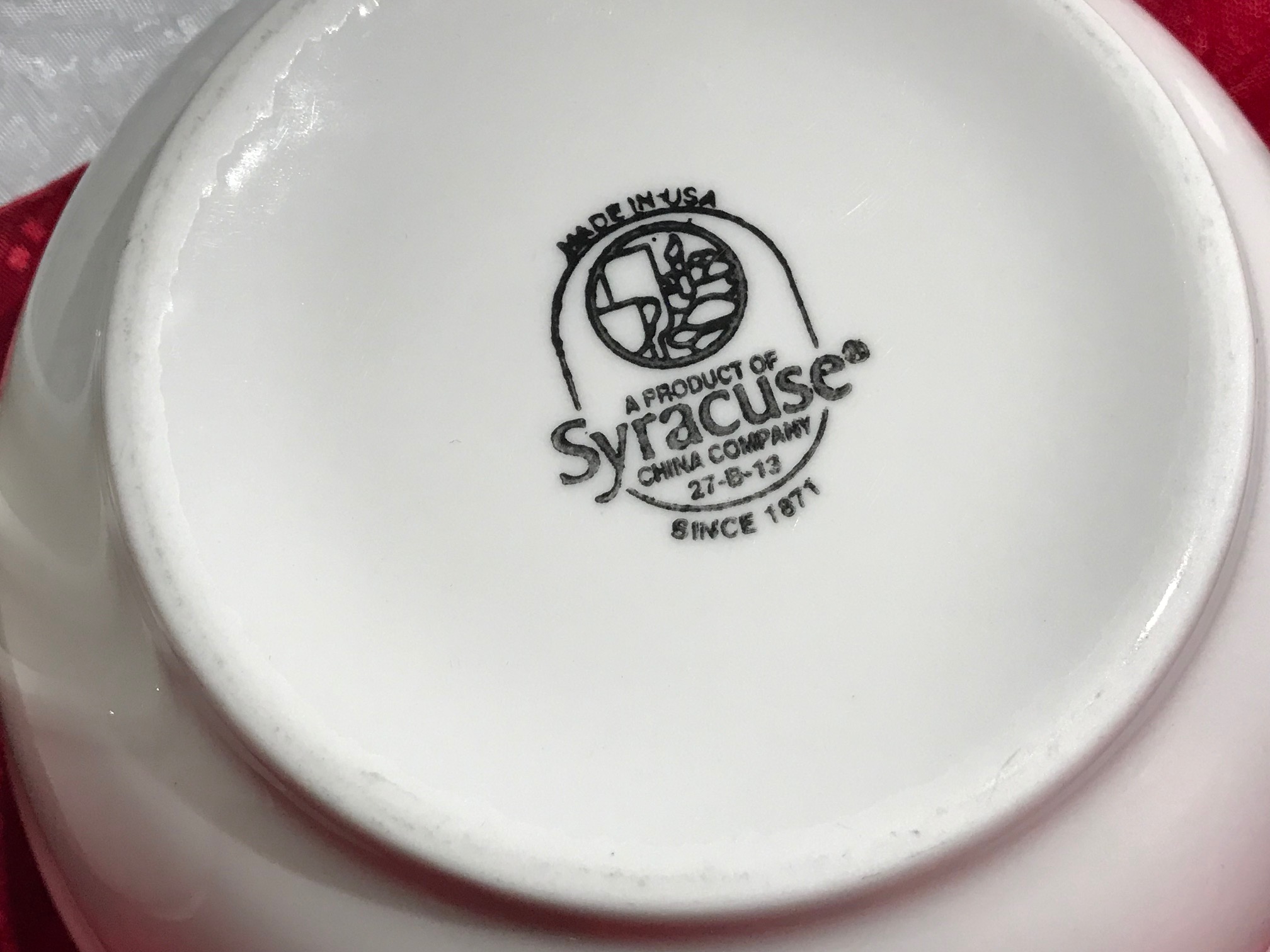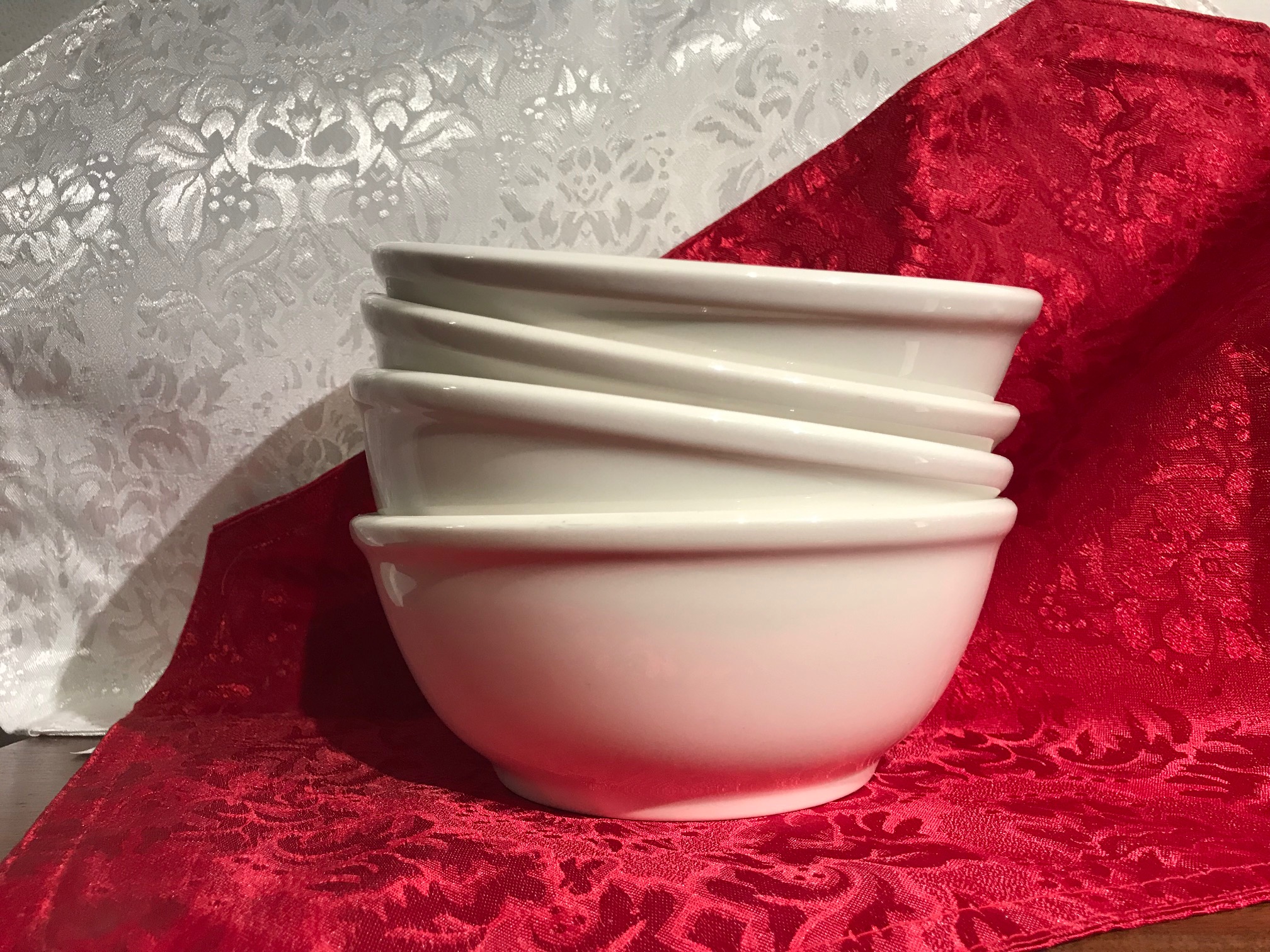Syracuse large cereal bowls – nicked from a college cafeteria c. 2002: 31,900 ppm Lead [90 ppm is unsafe for kids.]
 Did you “borrow” any cafeteria dishes when you graduated college?
Did you “borrow” any cafeteria dishes when you graduated college?
These large white-glazed ceramic (Made in the USA) cereal bowls made by Syracuse China Company [likely manufactured c. 1980-1989 or thereabouts – but possibly made as late as 2000 – and in regular use as late as 2002 at the college where they were taken from] were given to me by a family I had a home consultation with in 2019. The mother of the family told me that these were her husband’s favorite bowls (for cereal and soup and such) and – in fact – he had nicked them from the college cafeteria (back in the day – he graduated in 2002)! I share this little story with you NOT to call out this particular family, but because you don’t know how often I have heard this exact same story [and for equally toxic dishes!]
Although I never did this, it seems it’s a somewhat common occurrence for folks to grab a set of dishes as they graduate – as a memento of their college days! It is quite disturbing to know that colleges across the nation may still be using dishes like these for the everyday dishes in their cafeteria — dishes that may have been “fine” (non-leaching) when they were new, but may likely now be leaching significant amounts of Lead into the food contained in them (now that they have been in continuous use for, say, 20 or 30 years!)
When tested with an XRF instrument these Syracuse bowls had the following readings:
- Lead (Pb): 31,900 +/- 800 ppm
- Zinc (Zn): 322 +/- 42 ppm
- Iron (Fe): 882 +/- 172 ppm
- Vanadium (V): 97 +/- 29 ppm
- Titanium (Ti): 220 +/- 47 ppm
I was given the full “set” of four bowls by this family (for my collection for an upcoming museum exhibit), and each separate bowl had very similar readings.
Test results reported on this blog are accurate, science-based, and replicable. Testing was done for a minimum of 60 seconds per dish, and repeated multiple times to confirm the results. Each set of results found was similar to the results sets noted above. If a metal is not listed for any component it was not detected in that component using the XRF instrument in “Consumer Goods” mode – which tests any metals down to single-digit parts per million.
How much Lead is unsafe?
Ceramic dishes are not regulated at all currently for total Lead content, as detectable with an XRF instrument (and vintage ones never were!). As an example, here’s a link to a new 2019 dish that is positive for a high level of Lead! If dishes are not manufactured or marketed as “items intended for use by children”, they are exempt form any content-testing, and so finding this amount of Lead is neither unusual – nor illegal in any way! To read more about the concern for Lead in dishware, click here.
For context, the amount of Lead that is considered illegal and unsafe in an item that is expressly manufactured and sold as something to be used by children is anything 90 ppm Lead or higher in the paint, glaze or coating, and anything 100 ppm Lead or higher in the substrate. Given this bowl came in at over 31,000 ppm Lead, it would not be considered safe for a child to use, from a Lead perspective – but dishes are (across the board) not – in the context of current U.S. regulatory practices – considered to be “items intended for use by children.”(!)
Additional important point to note: there is a myth out there that Lead is less likely to be found at high levels in plain white china. This is simply not true.
Some additional reading:
- To see more Syracuse brand china I have tested, click here.
- To see more white ceramic items I have tested, click here.
- For safer choices for your family (as far as dinnerware is concerned), click here.
As always, please let me know if you have any questions.
Thank you for reading and for sharing my posts!
Tamara Rubin
#LeadSafeMama

Never Miss an Important Article Again!
Join our Email List




That makes me question whether or not all restaurant ware contains lead and or other toxic chemicals. I collect and use EVERYDAY buffalo china which is almost similar to the dish set you had tested BUT is it the same? I also have been using antique ironstone dishes as well -I am assuming those are not safe now to use either. Since the farmhouse look is quite popular these days and these dishes resemble “that look” – I feed my family off these dishes and my grandson. UGH now what? Took me 3 years to collect these random dishes. Do I toss them? are they toxic? have you tested Buffalo china? your HELP would be MUCH appreciated 🙂
Thank you,
Kristy
Hi Kristy –
Yes – neither of those types of china (Buffalo and antique Ironstone) are safe for food use (based on Lead-levels, age, normal usage and anticipated wear for items of that era.) I have tested many examples! I went to one family’s home where they had a collection of “Farmhouse style”/restaurant dishes like you describe (most were marked “Ironstone”) and they were ALL very high lead (most were plain white – and the owner assumed that meant they were Lead-free.)
I am sorry to break that news to you. Here’s my post about what to do with these Leaded items: https://tamararubin.com/2019/12/what-should-i-do-with-my-lead-contaminated-dishes-to-toss-or-not-to-toss/
Here’s my “white dishes” category which is fun (in a shocking way!) to scroll through!
https://tamararubin.com/category/white-ceramic/
Here’s one of interest: https://tamararubin.com/2019/07/royal-stafford-fine-earthenware-plate-made-in-england-purchased-at-crate-barrel-71900-ppm-lead-90-is-unsafe-for-kids/
And another: https://tamararubin.com/2017/11/homer-laughlin-white-ceramic-plate-75032-ppm-lead/
Here’s the Ironstone category on the blog: https://tamararubin.com/category/ironstone/
And – for fun! A restaurant mug: https://tamararubin.com/2018/04/grey-dog/
Tamara